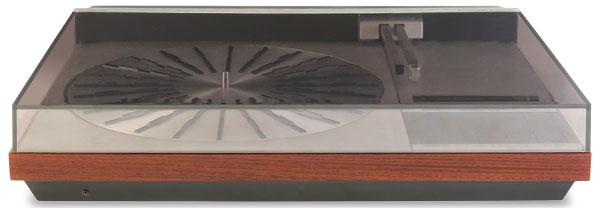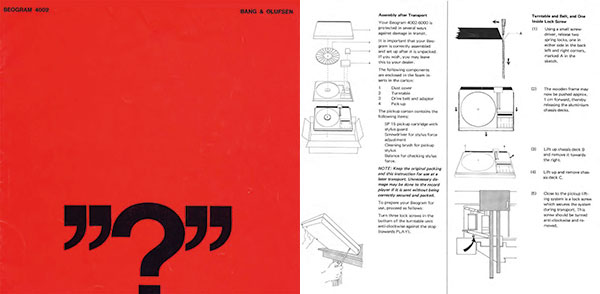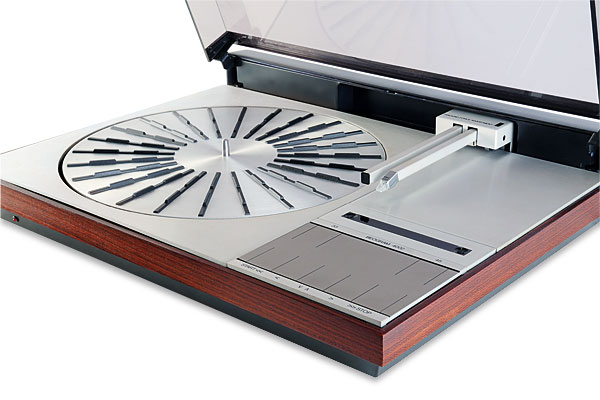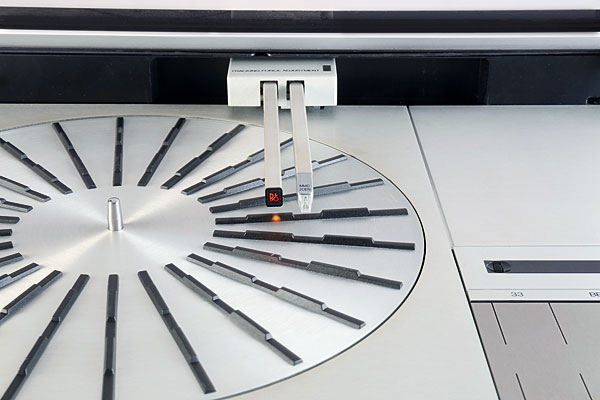B&O Beogram 4002 Turntable

 This turntable from 1975 saw the company cut its costs by replacing digital logic with a system that included a lamp, a photocell and paint. Did sound quality suffer?
This turntable from 1975 saw the company cut its costs by replacing digital logic with a system that included a lamp, a photocell and paint. Did sound quality suffer?
It certainly says something about the enduring appeal of a turntable when the company that made it buys up examples that are over 40 years old and sells them on to a new generation of buyers. It sounds remarkable, but this is precisely what Bang & Olufsen did recently with its 'Recreated Limited Edition' Beogram 4000c. Although offered as a revival of the Beogram 4000 [HFN Jul '14], it was actually the later Beogram 4002 that formed the basis of the project.
On A Tangent
The Beogram 4000 was a revolutionary turntable in that it incorporated important innovations in every aspect of its design. It may have been derided by traditional hi-fi hobbyists, but the 4000 was taken to heart by wealthy music lovers who appreciated its superb styling and excellent performance and were not put off by its hidden complexity and high price.
The deck featured – for the first time – a properly resolved tangential tracking arm controlled by an electronic servo. Electronic control was also applied to the turntable motor, and the whole arrangement was made completely automatic by digital electronics. The cartridge, meanwhile, fitted directly into the end of the stubby, rigid tonearm and was a miniaturised version of B&O's successful moving-iron design. As the parts were so small, it was decided the cartridge and stylus should be sold as a sealed, factory aligned assembly. The public was not used to the idea of a non-replaceable stylus so to begin with B&O offered replacements at half price. As well as being a top performer, the Beogram 4000 was an instant design classic, raising the bar in terms of style for its rivals at a stroke.

Good though the Beogram 4000 was, it was not without its challenges, not least in the complexity and expense of its assembly caused by the large amount of electronic circuitry. In addition to the drive systems, the functions of the 4000 were sequenced by an array of digital integrated circuits, this deck representing a very early adoption of 'computer' technology.
Key Decisions
The deck was also originally built with a bi-directional tracking servo, meaning that it could, in theory, play a record whose spiral groove started in the centre and finished at the edge (even though no such thing existed at the time). What was well designed were the mechanical parts, the plinth and the balanced lid mechanism.
As a result, when it came time to replace the Beogram 4000 with the Beogram 4002 all the major alloy castings and most of the cabinet were left unaltered. The only obvious external change concerned the control keys, which were restyled to match those of the Beomaster 6000 4channel receiver [HFN Sep '21]. Inside, however, the changes were more profound. The quantity of circuitry was more than halved without sacrificing performance or flexibility.

Plastic Fantastic
The way this was achieved was remarkable in its simplicity. It fact it's a wonder the original version was not designed in the same manner in the first place. Instead of digital logic the arm was controlled by a transparent strip of plastic marked with patterns of black paint. These were detected by a lamp and a photocell, the patterns carefully designed to generate signals which the simplified control system could easily interpret and act upon.
The original version of the Beogram 4002 (types 5501/5502) retained the Beogram 4000's electronically controlled AC motor. This was run from an internal oscillator and power amplifier to ensure both accurate speed stability and provide an easy way to vary the pitch – many B&O customers were professional musicians who especially valued this feature. In 1976 a new version was introduced, the type 5514/5515. The only external change of note was the addition of a mains switch on the rear of the cabinet – a welcome addition since previously it had only been possible to put the deck into standby mode unless one was willing to unplug it from the mains (the same was true of the 4000). Also added was a small red LED, mounted under the front lip of the plinth, to remind the owner that the turntable was switched on.
More significantly, a new motor was fitted to drive the turntable. Made by Matsushita, it was a DC type with a built-in FG servo system. The motor came with a dedicated control chip, meaning that the speed control system of this later version was greatly simplified. The new motor's improved characteristics allowed a much lighter platter to be fitted with the result that the suspension was also lightly revised. At the same time, the ability to run the platter without the tonearm moving (for record cleaning) was reinstated. As with the Beogram 4000, this was activated by pressing the 33rpm key while the deck was in standby mode.

The cueing system was also improved. In all of these models the arm was raised and lowered by a solenoid coil and a pneumatic cylinder. Since more power was required to pull in the solenoid than to hold it in place once engaged, a switch was attached to the mechanism to reduce the current once the arm was lowered. This proved unreliable in service and was replaced by a simple electronic timer.
World Record
The final incarnation of the B&O Beogram 4002 turntable appeared in 1978. Type 5524/5527 was little changed from its predecessors but it came fitted with the company's MMC20EN cartridge in place of the original MMC4000. The main reason for the change was to make possible the introduction of the Beogram 4004 – a specially adapted version that could be operated by remote control when connected to a Beomaster 2400-2 receiver.
In its earlier two versions, the Beogram 4002 was available with a quadraphonic decoder built-in, in order to play JVC CD4 records. This was sold as the Beogram 6000 and came fitted with a special MMC6000 cartridge. The geometry of the tip was designed by B&O's Subir Pramanik and set a new world record for a claimed effective tip mass of just 0.22mg.
The Beogram 4002 may not be quite as beautiful to behold as the original 4000 but it still looks discretely futuristic. Its cosmetics have certainly aged far better than many of the 1970s attempts to push turntable styling forward, most of which, to these eyes at least, now look like vulgar fads. I'm not convinced that the new keys, made from a slitted sheet of stainless steel, are a complete success – they lack the simplicity and tactile feel of the design they replaced. The two illuminated scales indicating manual speed adjustment are an improvement, however.























































